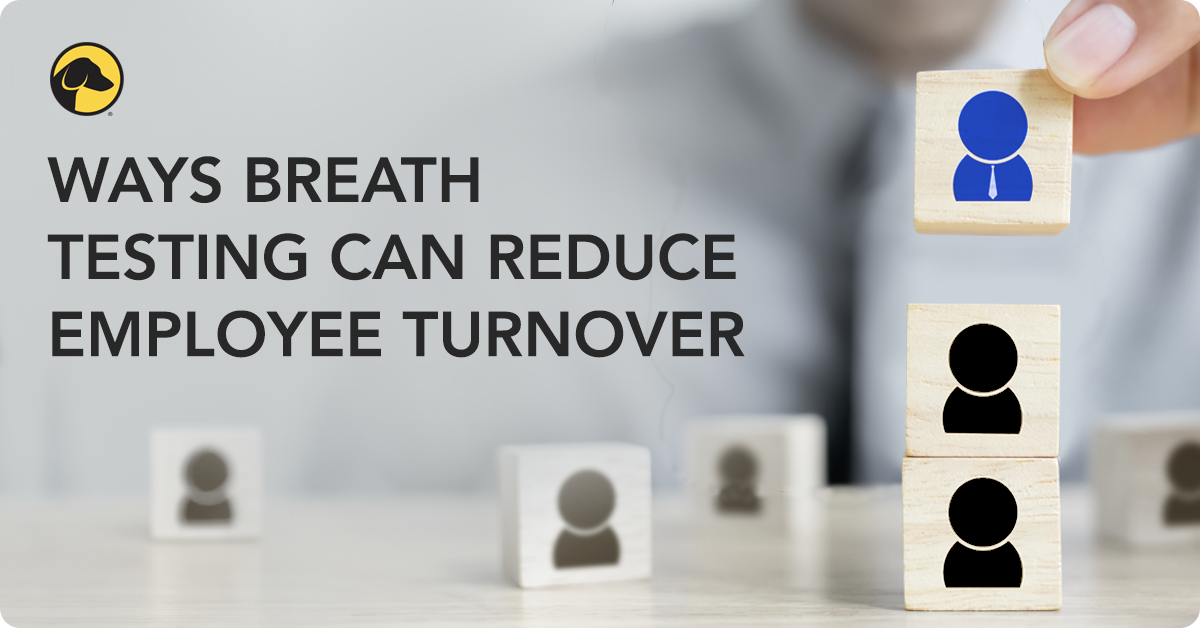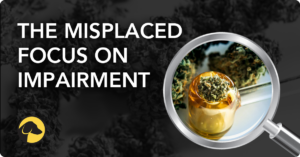
5 Ways Cannabis Breath Testing Can Help Reduce Employee Turnover
The legalization of cannabis is impacting employers across industries in the areas of recruitment, safety, and workplace testing. New laws in states such as California and Washington establish employment protections for off-duty cannabis use. In addition, laws regulate the methods employers can use to test for cannabis, limiting specimen types that may render positive results based on off-duty use.
As one employer put it, “We have an antiquated drug testing program, and now the laws are changing faster than our technology.”
Employers are now using cannabis breath testing as an alternative to conventional tests such as urine and oral fluid. With the industry’s shortest detection window, breath testing can help companies retain qualified applicants and prepare for additional legislation that could limit the use of test types with longer windows of detection.
Here are five ways a cannabis breath test can help reduce turnover and aid in employee recruitment, acquisition, and retention.
1. BROADEN THE RECRUITING FUNNEL
HR professionals must balance a variety of perspectives and competing priorities in the recruitment process. What may be considered a perk for one applicant could be a negative for another. When it comes to cannabis testing, employers are pulled in seemingly opposing directions. If they continue THC testing using conventional specimen types, they may dissuade applicants concerned about being unfairly penalized for cannabis use outside of work. If they stop THC testing, they may open themselves to safety risks associated with cannabis use in the workplace.
Breath testing introduces a shorter cannabis detection window that can help to satisfy these competing priorities. Testing for cannabis using breath is safer and more cost-effective than removing THC from a testing program. By isolating detection to use that occurs within 2-3 hours of the test, employers maintain the risk-reducing benefits of testing. At the same time, they can ease some of the fear factor among applicants who may use cannabis in their personal time away from work. As laws change, employers need policies to accommodate an employee’s choice to use cannabis while still tapping into the proven benefits of testing.
2. ENHANCE THE CANDIDATE EXPERIENCE
A 2023 Gallup poll revealed cannabis use is at an all-time high for adults between the ages of 18 to 34. As a result, more companies are challenged to find candidates who can pass conventional cannabis tests. One company recently hosted a hiring event attended by nearly 70 candidates. When the candidates were informed they would be tested for THC the following day, most did not return; the few that did failed the drug test. “We lost 100% of our candidates that day,” the employer told us.
If this employer had offered a cannabis breath test at the hiring event instead of a conventional THC test, the outcome could have looked much different. Breath collections are observed, convenient, mess-free, and can be performed in a matter of minutes. But more importantly, the test reflects only recent use that occurred within the past few hours, not the past few days or weeks, ensuring past use won’t unfairly impact their chances of employment.
3. BUILD THE RIGHT CULTURE
By implementing breath testing for applicants and new employees, companies can establish an effective deterrent to workday cannabis use. As part of the application and onboarding process, candidates should be educated on the company’s testing policies, setting a precedent for ongoing testing throughout an employee’s tenure. This is an important step to help ensure companies are recruiting and hiring qualified applicants in alignment with company culture.
Without a well-communicated policy, employees may not know what behavior is acceptable, what substances are prohibited surrounding the workday, under what circumstances a cannabis test may be performed, and if their confidentiality will be protected. According to a recent National Safety Council survey, less than 20% of employees report their company is doing a good job informing employees about their workplace cannabis policy.
Employers can specify how they will apply testing – whether to all employees or to certain positions based on their roles and responsibilities – and clearly communicate the policies to eliminate any surprises for employees and applicants. If a candidate or new hire receives a positive test result, employers have more information with which to make a hiring decision. And with clear communication about the company’s testing policies, candidates can make more informed decisions about their decision to pursue employment.
4. FOSTER A SAFER WORK ENVIRONMENT
When it comes to safety, employees trust their employers to implement policies that protect them and minimize risk in the workplace. Drug use in the workplace is one of the risks employers can and should address. Just as companies establish policies related to alcohol use, they can establish similar guidelines to prohibit cannabis use during the workday.
Policies are only enforceable, however, if companies have a reliable method to test for use. A breath test provides an objective gauge to reflect the timeframe of recent use. A positive result indicates a potential risk to workplace safety and the opportunity to respond through a stand-down procedure, second chance program, or other avenue as outlined in the employer’s policy.
In the case of an incident, the objectivity of a recent use test helps reduce liability risks associated with inaccurate or subjective conclusions of potential impairment. A positive result may be used to support reasonable suspicion determinations, while a negative result can help rule out cannabis as a contributing factor. Overall, the primary goal is to reinforce a culture of safety by detecting and deterring recent use, and mitigating potential risks before an incident occurs.
5. PROMOTE A PRODUCTIVE WORKFORCE
One obvious way cannabis breath testing promotes productivity is by helping reduce workplace drug use, which studies show is on the rise. That same National Safety Council report cited above shows workplace cannabis use can lead to performance issues, safety concerns, and reputational risks – all of which increase when companies stop testing for THC.
A second way breath testing helps companies improve productivity is by preventing the time and costs associated with replacing employees lost to positive drug test results. One employer recently stated, “We’re losing 60% of new hires due to positive marijuana test results. We need to recruit twice as many people as we have open positions.”
Today’s employers recognize non-negative results from a urine or oral fluid test may not indicate recent use that could impact work performance or safety. Implementing a recent use test helps them maintain the safety benefits of testing while retaining valuable employees they may otherwise lose to conventional tests.
WORKDAY TESTING TO SUPPORT DESIRED OUTCOMES
Changing legislation is accompanied by changing attitudes toward cannabis and a shift away from zero-tolerance cannabis testing policies in the workplace. With increased access, more applicants and employees are now using cannabis.
Rather than losing qualified candidates, employers across the country are implementing recent use THC breath testing to support the desired outcomes of ongoing testing while accommodating the potential for off-duty cannabis use.
Workplace cannabis testing continues to be essential for maintaining safety and productivity, deterring use before or during work hours, and mitigating risk – but it can and should be fair for all parties involved. A cannabis breath test provides a credible and mutually beneficial way for employers to maintain a safe work environment and for employees to be treated fairly during the era of cannabis legalization.
*This blog originally appeared on HR Daily Advisor in December 2023.

March 21, 2024
By TRICIA O'CONNOR
Director of Content + Brand Strategy
Share











